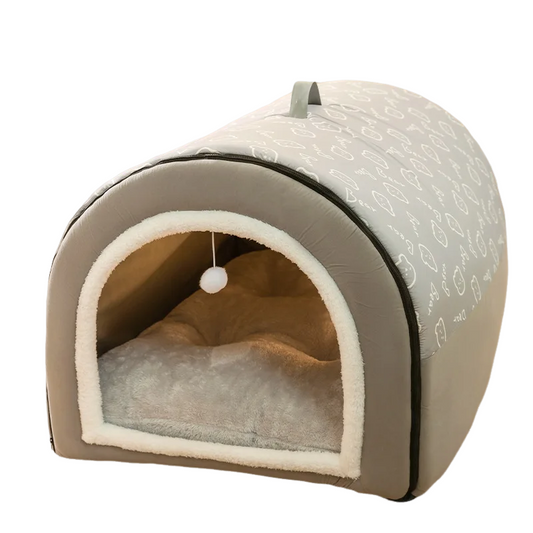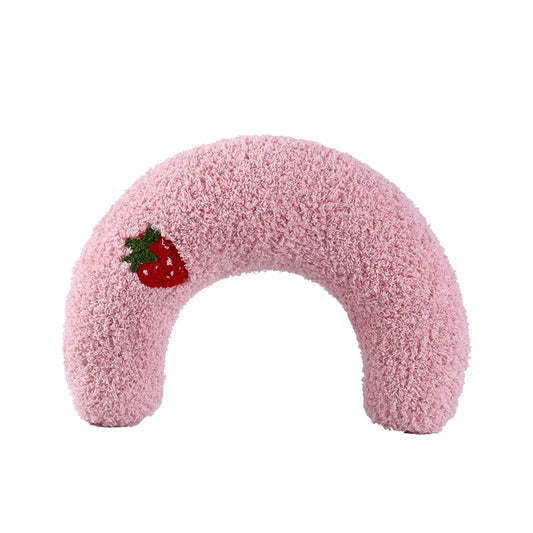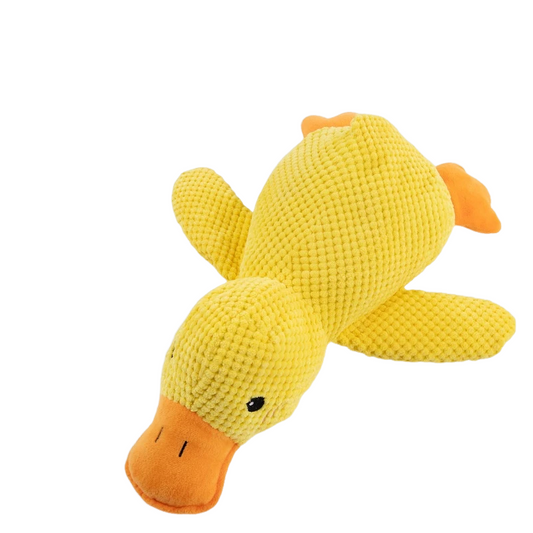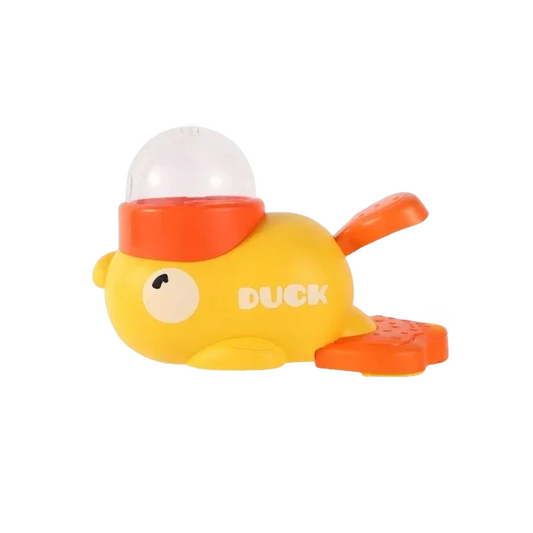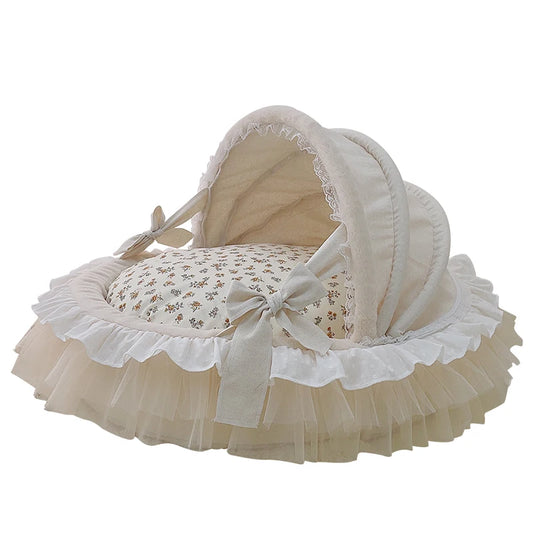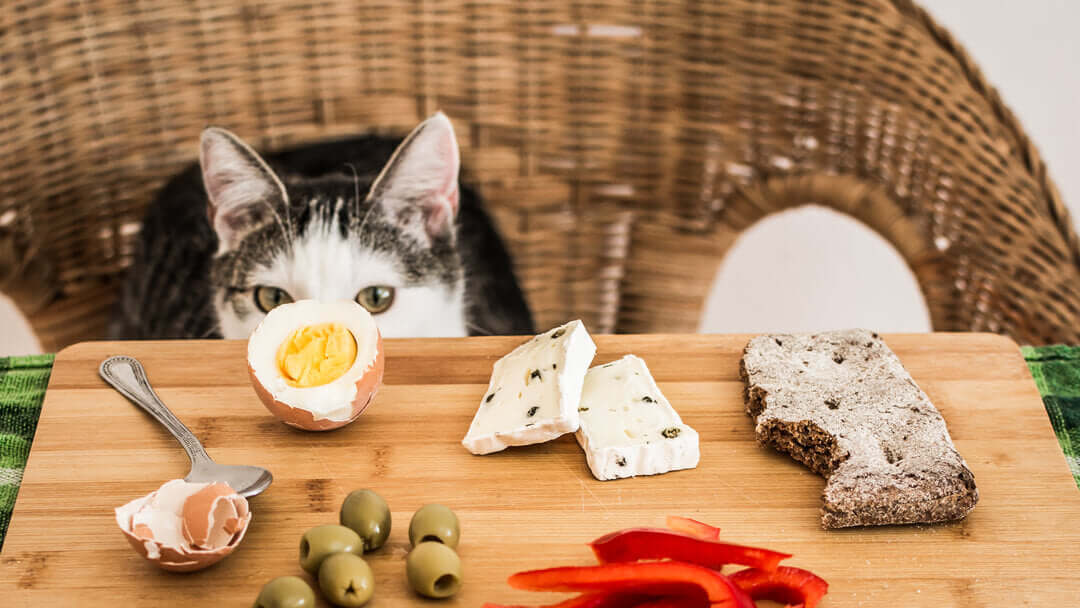
How to Choose the Right Cat Food: A Professional Guide for Cat Owners
Share
Introduction
Choosing the right cat food is crucial for maintaining your cat’s health and longevity. With countless options available, it can be overwhelming to determine which is the best fit for your feline friend. The right cat food provides balanced nutrition, supports growth, maintains weight, and promotes overall well-being. This guide will walk you through the essential factors to consider when selecting the ideal cat food, from understanding your cat's nutritional needs to choosing the right food based on age, health, and lifestyle.
1. Understanding Your Cat’s Nutritional Needs
Cats are obligate carnivores, meaning their diet primarily depends on nutrients found in animal products. This makes their dietary requirements unique compared to other pets. Here’s what to focus on:
- Protein: As carnivores, cats need a diet rich in high-quality animal protein. Look for ingredients like chicken, turkey, beef, or fish as the primary source of protein. Protein is essential for maintaining muscle mass, supporting the immune system, and providing energy.
- Fats: Healthy fats, especially Omega-3 and Omega-6 fatty acids, are important for maintaining a cat's skin health and a shiny coat. Fats also provide a concentrated source of energy.
- Taurine: Taurine is an essential amino acid that cats cannot produce in sufficient amounts. It is vital for heart health, vision, and reproduction. Make sure the cat food contains taurine, as deficiency can lead to serious health issues.
- Vitamins and Minerals: A balanced diet should provide all the necessary vitamins (A, D, E, and B complex) and minerals (calcium, phosphorus, and magnesium) that cats need to maintain strong bones, teeth, and immune health.
- Water Content: Cats have a low thirst drive and tend to consume water primarily through their food. Wet food is a good way to ensure your cat stays hydrated, especially if they aren’t drinking much from their water bowl.
2. Key Considerations for Choosing Cat Food
When choosing cat food, several factors should be taken into account to ensure it meets your cat’s specific needs:
2.1 Age and Life Stage
- Kittens: Kittens require a diet rich in protein, fats, and calories to support rapid growth and development. Look for cat food labeled specifically for kittens or “growth” stages, as they contain higher energy and nutrient levels.
- Adult Cats: Once your cat reaches adulthood (1-7 years), its energy needs stabilize, and it requires a balanced diet to maintain weight and overall health. Adult cat food provides a perfect balance of protein, fat, and essential nutrients.
- Senior Cats: Older cats (7 years and older) often need lower-calorie food to prevent obesity, along with ingredients that support joint health (like glucosamine and chondroitin). Look for senior-specific formulas that cater to their slower metabolism and potential health concerns.
2.2 Dry Food vs. Wet Food
- Dry Cat Food (Kibble): Dry food is convenient and cost-effective. It also helps with dental health by reducing plaque buildup. However, it lacks moisture, so ensure your cat drinks enough water if you feed them primarily dry food.
- Wet Cat Food (Canned): Wet food has a higher water content, which is essential for hydration. Cats who eat wet food tend to have fewer urinary tract issues and maintain better kidney health. Wet food is also more palatable for finicky eaters.
- Mix of Both: Offering a combination of wet and dry food can provide the benefits of both. The dry food helps with dental care, while the wet food keeps them hydrated and provides variety in their diet.
2.3 Breed-Specific Considerations
Certain cat breeds may have unique dietary needs:
- Maine Coon: These large cats may require diets that support joint health and muscle maintenance due to their size.
- Siamese: Known for their sleek bodies, Siamese cats may need higher protein diets to maintain lean muscle mass.
- Persian: This breed is prone to hairballs, so a diet that supports digestive health and contains added fiber can be beneficial.
3. Reading Cat Food Labels: What to Look For
Knowing how to read a cat food label is key to selecting the right food for your cat:
3.1 Ingredients List
The ingredients are listed by weight, so the first few ingredients should be high-quality, whole animal proteins.
- High-Quality Protein: The first ingredient should be a named meat source, such as chicken, turkey, or fish. Avoid generic terms like “meat meal” or “animal by-products.”
- No Fillers: Avoid cat food with excessive fillers such as corn, soy, or wheat. These ingredients offer little nutritional value and may cause digestive problems for some cats.
- Avoid Artificial Additives: Stay away from food containing artificial colors, flavors, or preservatives (such as BHA, BHT, and ethoxyquin), as these can be harmful in the long run.
3.2 Guaranteed Analysis
This section of the label shows the percentage of protein, fat, fiber, and moisture. A healthy cat food should have:
- Protein: At least 26-40% for dry food, and 8-10% for wet food.
- Fat: 9-15% in dry food, and 3-5% in wet food.
- Fiber: About 1.5-4% fiber for proper digestion.
3.3 AAFCO Certification
The Association of American Feed Control Officials (AAFCO) sets guidelines for pet food nutrition. Look for the statement on the label that says the food is “complete and balanced” according to AAFCO standards for your cat’s life stage (growth, maintenance, or all life stages).

4. Special Dietary Considerations
Some cats may have specific health issues that require a specialized diet:
4.1 Weight Management
If your cat is overweight, look for cat food that is labeled as “weight control” or “light.” These formulas have fewer calories while still providing the necessary nutrients. They also contain higher levels of fiber to keep your cat feeling full.
4.2 Hairball Control
Cats that groom themselves frequently, such as long-haired breeds, may benefit from cat food formulated to reduce hairballs. These foods often contain more fiber to help hair pass through the digestive system.
4.3 Allergies and Sensitivities
If your cat has food allergies, you may need to switch to a limited-ingredient or hypoallergenic diet. Common allergens include chicken, beef, dairy, and grains. Switching to a novel protein like duck or rabbit can help alleviate symptoms.
4.4 Urinary Health
Cats are prone to urinary tract issues, especially male cats. Look for formulas that are specifically designed to promote urinary health, containing lower levels of magnesium and added moisture to prevent crystal formation.
4.5 Grain-Free vs. Grain-Inclusive
Grain-free diets are popular, but they are not necessary for all cats. Some cats benefit from whole grains, such as brown rice or oats, which provide fiber and energy. However, for cats with grain sensitivities, a grain-free diet may be a better option.
5. Common Cat Food Myths
- Myth 1: Cats Can Eat Dog Food: Cats and dogs have very different nutritional needs. Dog food lacks essential nutrients like taurine and arachidonic acid, which are vital for cats. Feeding your cat dog food can lead to serious health problems over time.
- Myth 2: Raw Food is Best for Cats: While raw diets are becoming more popular, they come with risks such as bacterial contamination and nutrient imbalances. If considering a raw diet, it’s important to work with a veterinarian to ensure it meets your cat’s needs.
- Myth 3: Wet Food Causes Dental Problems: Wet food does not inherently cause dental problems. However, supplementing wet food with dental treats or kibble can help keep your cat’s teeth healthy.
Conclusion: Making the Best Choice for Your Cat
Choosing the right cat food is essential for supporting your cat’s overall health and well-being. By focusing on high-quality ingredients, understanding your cat’s specific needs, and regularly consulting with your veterinarian, you can ensure your feline companion receives the nutrition they need for a long, healthy life.
Remember to select food that matches your cat’s age, size, and any specific dietary requirements they may have. With the right diet, you’ll be providing your cat with the foundation they need for a happy, active, and fulfilling life.
Key Takeaways
- Prioritize high-quality animal protein and avoid fillers or artificial additives.
- Choose food based on your cat’s life stage (kitten, adult, senior).
- Balance wet and dry food to meet hydration and dental needs.
- Consider special dietary requirements, such as weight management, hairball control, or food sensitivities.
By following these professional tips, you can confidently select the best cat food for your beloved feline friend!





